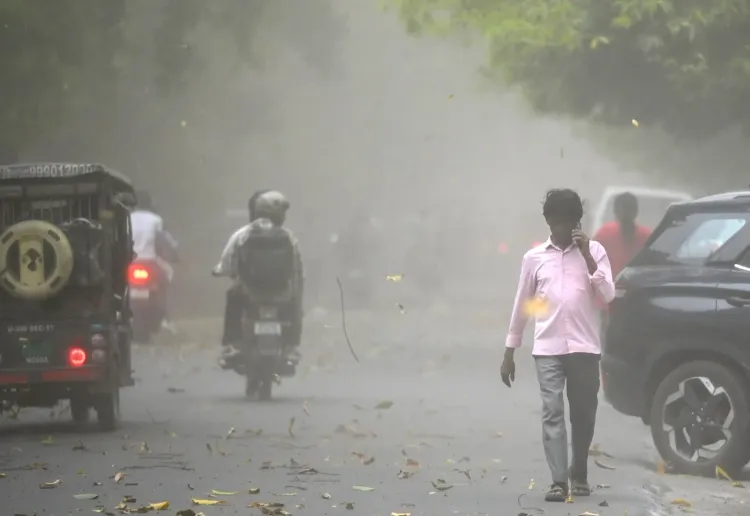Is Delhi-NCR Breathing Easier Post-Rain or Still Struggling with Air Quality?

Synopsis
Key Takeaways
- The recent rainfall provided a slight improvement in air quality.
- Many areas still face 'poor' to 'very poor' air quality levels.
- Stage 1 restrictions are in effect due to elevated AQI levels.
- Dust-laden winds and pre-monsoon conditions are contributing to pollution.
- Residents should remain vigilant and informed about air quality conditions.
New Delhi, May 17 (NationPress) Following a brief bout of rainfall across various regions of Delhi-NCR, there was a slight enhancement in both air quality and temperature on Saturday morning. Yet, the overall air quality in numerous areas continues to be categorized as "poor" to "very poor".
According to the Central Pollution Control Board (CPCB), the Air Quality Index (AQI) readings at different locations early Saturday remained above the 200 threshold.
Anand Vihar recorded an AQI of 222, while the vicinity of Delhi Technological University (DTU) registered 206. In Dwarka Sector 8, the AQI was at 210, whereas ITO showed a relatively improved level of 146. Near India Gate, the AQI was measured at 177, an enhancement from Friday’s alarming reading of 250.
Despite the temporary respite offered by the showers, Delhi has been contending with declining air quality for several days.
In light of the escalating pollution levels, the Commission for Air Quality Management (CAQM) has enacted Stage 1 restrictions under the Graded Response Action Plan (GRAP) throughout Delhi-NCR. These measures are activated when AQI levels fall within the 201–300 range, classified as "poor".
On Friday morning, Delhi’s average AQI had dropped into the "very poor" category at 305. Severe spikes were observed in areas such as Wazirpur and Mundka, where AQI figures soared to 422 and 419 respectively, classified as "severe".
Experts point to a mix of dust-laden winds and deteriorating pre-monsoon atmospheric conditions as culprits behind the sudden drop in air quality.
The India Meteorological Department (IMD) reported that a substantial cloud mass over the area triggered strong winds, reaching speeds of 30–40 km/h, particularly in Palam. These gusts lifted fine dust particles into the atmosphere, leading to reduced visibility and worsened air quality throughout the capital.
While the light rainfall has slightly settled airborne particles, environmental specialists emphasize that the current improvement is only temporary. With ongoing pre-monsoon weather patterns, authorities are advising citizens to exercise caution and stay informed about real-time air quality updates.










